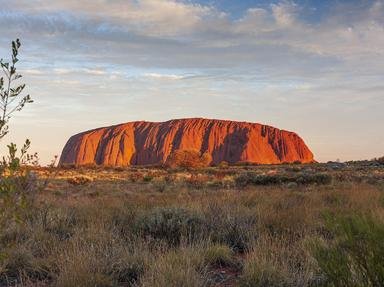Quiz Answer Key and Fun Facts
1. A is for Adelaide, the Capital of South Australia. It is known throughout Australia as the "City Of _______"?
2. B is for Brisbane, the Capital of Queensland. B is also for Bridge. The Brisbane River has many bridges spanning it. Which of the following bridges had a runaway barge lodge against it during the devastating flood in 1974?
3. C is for Canberra, our nation's capital. The city's layout was designed by a fellow by the name of Walter Burley Griffin. What nationality was Walter?
4. D is for Darwin, the capital of the Northern Territory. In February 1942, what distinguished Darwin from the rest of Australia, so far as World War II was concerned?
5. E is for Explorers. Many explorers traversed the length and breadth of the country in the early years of European settlement, in search of fertile grazing lands, supposed inland seas, untold riches and the like. Usually, they found nothing but desert. If they were lucky, they didn't find death and starvation. Which explorer(s) are associated with the story of the "Dig" tree?
6. F is for Football. Four main codes of football are played in Australia. In which code would you find Melbourne Storm playing at National League level (or equivalent)?
7. G is for Gold. In the 1800s, there were several gold rushes in Australia. At which of the following gold locations did the famous armed Miner's rebellion known as the "Eureka Stockade" occur?
8. H is for Hobart, the capital of Tasmania. Every year on Boxing Day, a fleet of yachts leave Sydney Harbour bound for Hobart. What is this race called?
9. I is for Islands. Australia has a bunch of them. Which of the following islands is policed by State Police rather than Federal Police?
10. J is for Jingles (Advertising). Which of the following advertising jingles was adopted from an American advertising jingle?
11. K is for Kosciuszko, Australia's highest mountain. It was named after a Polish man, Tadeusz Kosciuszko. Which of the following statements about Tadeusz Kosciuszko is not true?
12. L is for Lamington. Which of the following answers has nothing to do with the word Lamington?
13. M is for Melbourne, the capital of Victoria. In October 1970, what tragedy occurred in the city?
14. N is for the Northern Territory. Which of the following statements about the Northern Territory is *not* true?
15. O is for Ockerisms. An ockerism can best be defined as a word or statement made by an Australian, which to someone unfamiliar to the term has little to no meaning until explained (and possibly then still no meaning!). Which of the following ockerisms does NOT mean to vomit?
16. P is for Perth, the capital of Western Australia. Summer in Perth is typified by strong sea breezes, affectionately known as what?
17. Q is for Qantas, Australia's national airline. It is typified by the red and white "Flying Kangaroo" insignia on the tail of each aircraft. Which type of jet has Qantas never had in its fleet?
18. R is for Reef. More specifically, the Great Barrier Reef. In the 1970s, what caused concern for the ongoing health of this reef?
19. S is for Sydney, the Capital of New South Wales. Its north and south shores are joined by the Sydney Harbour Bridge. By what affectionate nickname is the bridge known?
20. T is for the Tropic of Capricorn which passes through Australia, separating it into a temperate zone and a tropical zone. Which of these Australian places is located on the tropic?
21. U is for Uluru, a giant monolith in the middle of Australia. Located in the Northern Territory, Uluru was formerly known as _______ ?
22. V is for Van Diemen's Land, which is now known as Tasmania, which is Australia's island state. Which well known group have a song called "Van Diemen's Land"?
23. W is for Weird placenames. Which of these places does not exist in Australia?
24. Y is for Yothu Yindi, an indigenous Australian rock group. In the 1990s, they teamed up with which well known musician to record the beautiful song "Dots On The Shells"?
25. Z is for Zoos. Australia has many. Which zoo is located in Dubbo?
Source: Author
FussBudget
This quiz was reviewed by FunTrivia editor
ozzz2002 before going online.
Any errors found in FunTrivia content are routinely corrected through our feedback system.

